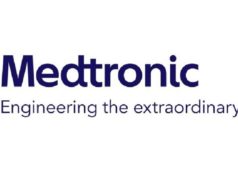 Neuspera Medical recently announced it has completed patient enrolment and implant procedures for the SANS-UUI pivotal clinical trial of its Neuspera system—a discreet, minimally invasive implant designed to provide patients with personal control and relief from urinary urge incontinence (UUI), a symptom of overactive bladder (OAB), via sacral neuromodulation (SNM).
Neuspera Medical recently announced it has completed patient enrolment and implant procedures for the SANS-UUI pivotal clinical trial of its Neuspera system—a discreet, minimally invasive implant designed to provide patients with personal control and relief from urinary urge incontinence (UUI), a symptom of overactive bladder (OAB), via sacral neuromodulation (SNM).
“As the coordinating investigator for the SANS-UUI clinical trial, I’m excited at the prospects of the Neuspera system for treating patients with OAB symptoms in the least invasive manner,” said Osvaldo Padron (Florida Urology Partners, Tampa, USA).
The SANS-UUI multicentre, single-arm clinical study is designed to demonstrate the safety and efficacy of the Neuspera system and ultimately gain US Food and Drug Administration (FDA) approval in the USA. Patients were screened and implanted with the device at 26 centres across the USA and Europe, according to a Neuspera press release.
“We are pleased to have reached the target patient enrolment in our pivotal SANS-UUI trial,” said Steffen Hovard, the company’s chief executive officer. “The completion of patient implants builds on the progress and strong momentum from our previously reported, positive clinical outcomes.”
“Completing patient enrolment and implants is an important milestone in Neuspera’s journey towards revolutionising the way physicians utilise SNM therapy,” added Steve Siegel, chief medical officer of Neuspera. “We’re grateful to the patients and physicians partnering with us in this study, and we look forward to finalising the data that will support our FDA submission of the Neuspera system.”
As per the company release, Neuspera’s “unique” system is designed to provide patients who have failed medication management a minimally invasive, more approachable way of benefitting from SNM—a clinically proven, effective treatment that has been used for more than 30 years to treat UUI associated with OAB.
The Neuspera system is the least invasive SNM device—Neuspera claims—and includes an ultra-miniaturised pulse generator attached to an electrode array. It is designed to be discreet, to provide patients with freedom from inconvenient and visible batteries, and to empower them to regain control of their life. The system has FDA clearance for treating chronic pain of peripheral nerve origin and is undergoing clinical trials as an investigational device for the use as a UUI treatment.









